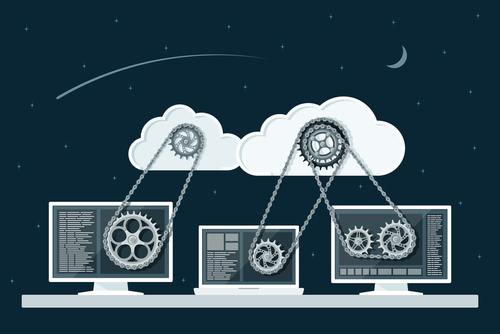The restrictions imposed in the wake of the Covid-19 pandemic have significantly accelerated the adoption of cloud, particularly DaaS and other such virtualized services that allow one to work from anywhere. Enterprises of all sizes are suddenly all about migrating to the cloud. However, it’s not just a matter of copying your data from one location to another and reinstalling the same software. When it’s done right, a successful cloud migration can help transform your entire business.
Understanding your options
Before you begin migrating desktop systems to the cloud, you need to understand all the options at your disposal. Some questions to ask yourself are:
- Will your company use the cloud simply for storage, or are you looking to migrate applications to a Software As A Service solution, too?
- How are you going to manage access to the various cloud resources in order to ensure business continuity while also preventing data loss?
- Are you planning to allow the bring-your-own-device (BYOD) approach, or will you provide devices to allow your employees to access the virtual desktop infrastructure (VDI)?
The answers will probably vary for every organization. As such, you should try to leverage employees with relevant knowledge or experience to create and execute your desktop virtualization roadmap. You can also onboard a consultant to take on the role of a trusted advisor during the planning and execution phases of the project.
Defining your goals
Now that you’re committed to cloud computing and have a better idea of your options, it’s time to move forward and start defining goals. If possible, take a multi-phased approach to the assessment, planning, configuration and deployment of your virtual desktop environment. It’s best to start on a small scale possibly with a smaller group of employees or specific functional areas. What do you hope to achieve within the first days, weeks and months of your cloud migration?
After you’ve set some of your initial goals, it’s time to move to the second phase and establish some long-term objectives. Again, a consultant or trusted advisor is a worthwhile investment when it comes to determining milestones, setting targets and establishing goals.
Managing infrastructure
Who will be in charge of managing your infrastructure? If you’re relying on a third-party service provider, you should do some research before making a final selection. If possible, try to answer the following questions ahead of time:
- What levels of support do they offer and how much does it cost? Read reviews and see how their customers rate their support. Let’s face it, problems are almost certain to arise during a cloud migration. This is especially true if you and your staff are completely unfamiliar with the process. Having easy access to technical support is an essential feature.
- What are their service-level agreements? Service-level agreements, or SLAs, provide certain guarantees regarding service, quality and efficiency. Make sure you’re familiar with a service provider’s SLAs before making any long-term commitment.
Planning for continuity
Don’t forget to plan for service continuity and disaster recovery, including the phases before, during and after your cloud migration. Since disaster can strike at any time, and it’s entirely possible to lose crucial data during the migration itself, it’s important to have a plan in place to address such issues as soon as they arise and understand the potential risk to your business if some or all of your employees are impacted by an untimely incident.
Knowing your limits
Finally, it’s important to know your limits. Take your time to do all of the necessary research, ask questions when talking with professionals and most importantly, make sure to educate yourself on the topics of cloud computing, data migration and data security. These steps will help you understand the technological limits of your company, set up a multi-phased action plan, and complete your cloud migration in a secure and efficient manner.

